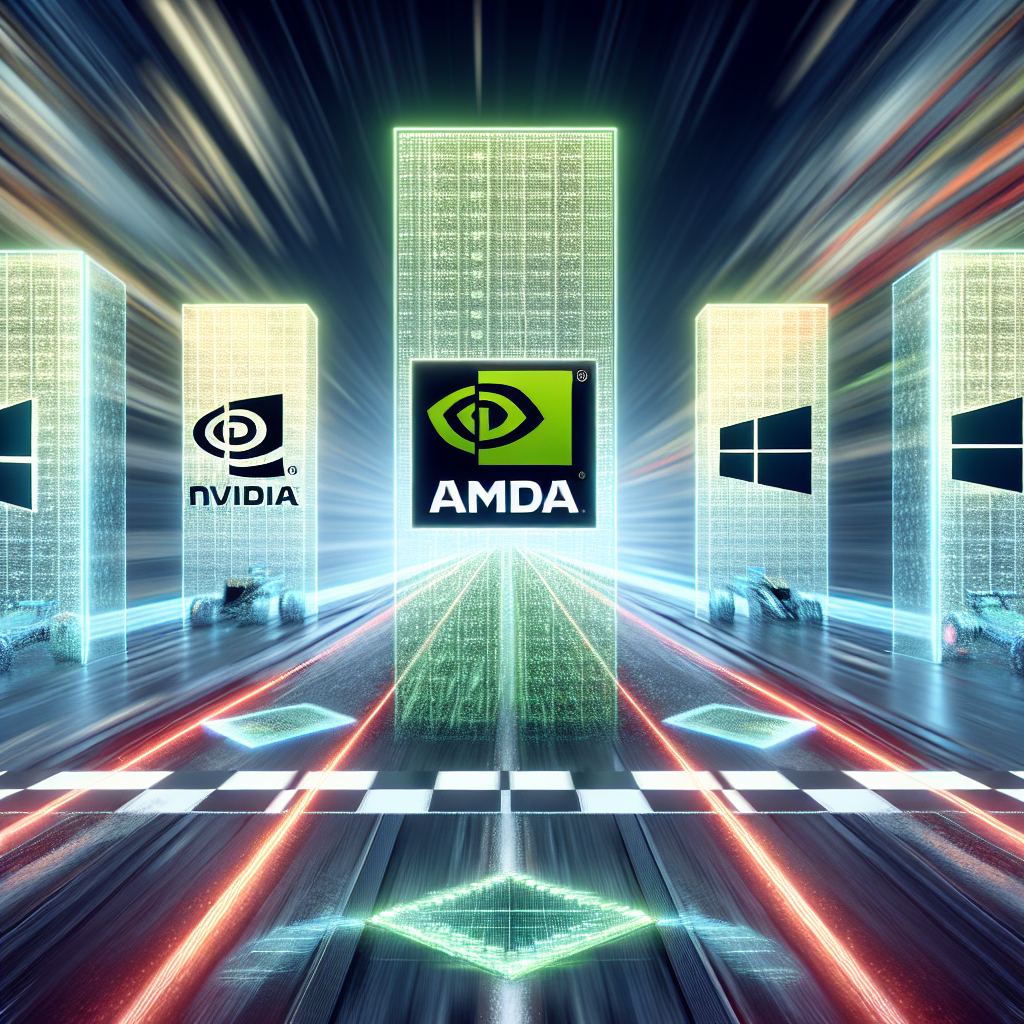Introduction to the Emerging Arm CPU Competition in the PC Market
The PC market has long been dominated by the x86 CPU architecture, a legacy of computing power that has persisted since the era when dinosaurs captured the public’s imagination. However, the technological landscape is shifting, and the winds of change are bringing a new contender to the forefront: Arm-powered CPUs. Amidst a whirlwind of speculation, industry giants AMD and Nvidia are rumored to be gearing up to challenge Qualcomm in the Windows Arm CPU arena, potentially reshaping the future of computing as we know it.

(Image credit: Future)
Qualcomm’s Exclusive Deal with Microsoft
At the heart of the current Arm-powered PC landscape is an exclusive deal between Qualcomm and Microsoft. This agreement has ensured that devices running Windows on Arm are equipped with Qualcomm’s Snapdragon CPUs. However, this exclusivity is not eternal; it’s slated to conclude in the near future, opening the gates for competitors like AMD and Nvidia to make their mark in the market.
- Qualcomm’s exclusive rights to Windows on Arm devices.
- Expiration of the deal allows AMD and Nvidia to enter the market.
- Potential for increased competition and innovation in Arm CPUs for Windows.
Nvidia’s Foray into Arm CPUs
Nvidia, a titan in the GPU industry, is no stranger to the Arm architecture. The company has a storied history with Arm CPUs, having powered the popular Nintendo Switch with a variant of its Tegra X1 system-on-chip, which includes four Cortex-A57 CPU cores. Nvidia’s expertise in this domain is set to expand as they plan to launch an Arm CPU for Windows by 2025.
In the past, Nvidia and Microsoft have collaborated on devices like the Surface tablets that utilized Windows RT and Tegra SoCs. Although Microsoft later shifted to Intel’s Atom CPU, Nvidia continued to refine its processor designs for other markets. One of the most notable developments is the Grace CPU, a powerhouse with 144 cores based on Arm’s Neoverse V2 architecture, designed for high performance computing (HPC) in data analytics and AI applications.
While the Grace CPU is not intended for desktop PCs, it demonstrates Nvidia’s capability and financial strength to innovate and potentially adapt such technology for the consumer PC market.
AMD’s Development of Arm CPUs
AMD’s journey with Arm CPUs has seen its share of starts and stops. The company previously ventured into the Arm space with the Opteron A1100, an Arm CPU featuring eight Cortex-A57 cores. Despite its early promise, the Opteron A1100’s market impact was muted, arriving four years after its announcement when interest had waned.
Simultaneously, AMD was developing its groundbreaking x86 Zen architecture, and in parallel, an Arm-based project known as K12 was initiated. Financial constraints, however, forced AMD to prioritize its resources, leading to the K12 project being shelved as the company focused on the more immediately lucrative Zen.
With the Arm landscape evolving rapidly, speculation about a K12 revival abounds, but it’s more likely that AMD will take a fresh approach to Arm CPU design, potentially integrating technologies from its various segments, such as RDNA GPUs and advanced FPGA components.
| Project | Details |
|---|---|
| Opteron A1100 | Eight Cortex-A57 cores, released with significant delay |
| K12 | Custom 64-bit Arm design, shelved in favor of Zen architecture |
Qualcomm’s Future Plans and Competition
As the exclusive deal with Microsoft nears its end, Qualcomm is not standing still. The company is fortifying its position in the Windows PC market by developing a new chip, the Elite X. This upcoming SoC boasts a 12-core CPU and an updated Adreno GPU, features that draw comparisons to the Apple M1 chip in terms of design philosophy and potential performance.
While Qualcomm’s Elite X is unlikely to compete at the pinnacle of PC gaming hardware, it represents a significant step in capturing a share of the lucrative notebook sector, where efficiency and integrated graphics performance are highly valued.
Intel’s Role in the Arm CPU Market
While AMD, Nvidia, and Qualcomm are making strides in the Arm CPU market, Intel remains a pivotal player. Known for its x86 processors, Intel has been securing deals to manufacture Arm-based chips in its own foundries. This move doesn’t necessarily signal Intel’s own production of Arm CPUs, but it does show a willingness to support the broader ecosystem.
The potential for Intel to produce its own Arm CPUs adds another layer of intrigue to the market dynamics. Should AMD, Nvidia, and Qualcomm all turn to Intel’s foundries to manufacture their Arm CPUs, it would indeed be an ironic twist in the semiconductor saga.

